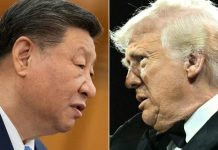As the India-China border conflict remains unresolved, a former Indian Army general says that the Army’s withdrawal from the Pangong Tso in eastern Ladakh was a “grave mistake”.
The remark assumes significance as there has been no let-up in the border standoff with China that began exactly a year ago.
According to reports, ever since the February 2021 disengagement in the Pangong Tso area, China has been rotating its troops in the “depth areas” along the Line of Actual Control (LAC) and is intensifying its military position along the disputed border with India, adding fuel to the border conflict.
Besides, the temporary structures such as helipads, ammunition dumps, and surface-to-air missiles that the Chinese PLA had put in place following the Galwan Valley clash are now being converted to permanent positions.
India-China Border Clash
The June 15, 2020, clash between Indian and Chinese troops was the deadliest in decades. India lost 20 of its soldiers while China took months before officially admitting the deaths of four PLA men.
Although no guns and explosives were used in the clash due to a long-standing agreement between the two countries, the two sides savagely attacked each other with stones and nail-studded clubs.
Following this incident, China suddenly diverted its troops to undertake multiple incursions into the eastern Ladakh region in a well-planned manner, and India was caught off-guard.
To match the PLA deployment, India had moved over three additional divisions along with howitzers and armored vehicles. Fighter jets, attack and heavy-lift helicopters were also positioned in the forward bases.
Experts Fear China Could Use Its Space Station For Military Use, Trigger A New ‘Space Race’
India’s ‘Grave Mistake’
In an interview with The EurAsian Times, Maj. Gen. Raj Mehta (retired), said: “India had an operational and tactical advantage over China in the Pangong Tso region which could have made it easier for us to negotiate peace at the border with them.”
After multiple rounds of diplomatic and military talks, the armies on the two sides finally disengaged in February.
He further said, “One has to show certain restraints in strategic terms which are broadly defined by the Ministry of External Affairs.”
After retreating from the Pangong Tso, the PLA had blandly refused to pull back from other friction points such as Gogra, Hot Springs, Demchok, and Depsang Plains, raising a major concern for India.
Calling it a “complete status quo” and a “disaster for India”, General Mehta said that “vacating certain key-heights at Pangong Tso was a grave mistake.”
The 11th round India-China Corps Commander Level Meeting held last month remained inconclusive with indications that the Chinese side would conduct further exercises.
The Indian Army is also well-prepared as it has not lowered the guards and has maintained an equal number of troops as those of the Chinese, Maj. Gen. SB Asthana (Retd) told The New Indian Express last month.
The PLA recently deployed long-range precision strike-rockets near the Indian border, as earlier reported by the EurAsian Times.
Following this, China deployed a ‘Combined Air Defense System’ in the Western Theater Command, which is tasked with securing the LAC.
In defiance of the assurances of disengagement, Beijing continues to deploy personnel and advanced weaponry near the LAC, the de facto Himalayan border that divides the two countries.
“Despite occupying heights of tactical and operational significance, the interaction with China regarding Pangong settlement has gone against India”, according to General Mehta.
With China in no mood to disengage from the rest of the friction points, India has decided to augment its border infrastructure along the LAC to counter any possible misadventure by the PLA in the future.
Other than building roads, helipads, tunnels, and bridges, India has also taken up the comprehensive Integrated Border Management Systems which includes upgrading border outposts, border fencing, mobile towers, and the use of technology by the border forces.




